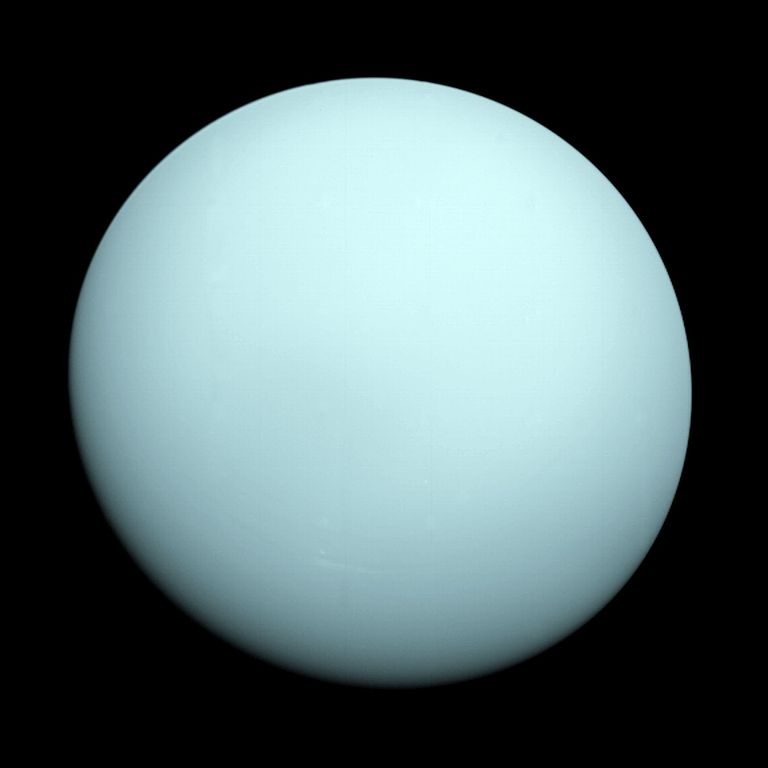Possibly open first exo-uranium
Employees of Ohio State University claim that they were the first to discover a uranium-like planet orbiting a distant star.

In the solar system there are three main types of planets: with a solid surface (Mercury, Venus, Earth and Mars), gas giants (Jupiter and Saturn), and also planets containing, in addition to gas, also methane ice (Uranus and Neptune). The previously detected exoplanets belonged to one of the first two types.
The newly discovered planet is quite massive, and at the same time it rotates in an orbit, the radius of which is close to the radius of the orbit of Uranus. Thus, astronomers concluded that it should be similar in its composition to Uranus.
')
The first exo-uranium was detected by the method of gravitational microlensing. This effect occurs at the moment when the trajectories of two stars intersect in the sky. Then the closer one focuses the light from the farther due to the curvature of space caused by the gravitational influence, according to Einstein's theory of relativity.
If a fairly massive planet is drawn around a focusing star, then because of its rotation, the apparent brightness of a distant star changes periodically. This change can be detected and calculated from them the mass of the planet and the radius of its orbit. Interestingly, for the OGLE-2008-BLG-092L object, which is a double star, the effect of gravitational microlensing was observed twice - in 2008 and 2010. From these data, it was possible to determine the presence in the system also of the third massive companion - the desired exo-uranium. It should be noted that exo-uranium can currently be discovered only by this method.

The observation was carried out using a 1.3-meter Warsaw telescope installed at the Chilean observatory in Las Campanas, as part of the Optical Gravitational Lensing Experiment (OGLE) project.

The results of the work published in the journal The Astrophysical Journal .

In the solar system there are three main types of planets: with a solid surface (Mercury, Venus, Earth and Mars), gas giants (Jupiter and Saturn), and also planets containing, in addition to gas, also methane ice (Uranus and Neptune). The previously detected exoplanets belonged to one of the first two types.
The newly discovered planet is quite massive, and at the same time it rotates in an orbit, the radius of which is close to the radius of the orbit of Uranus. Thus, astronomers concluded that it should be similar in its composition to Uranus.
')
The first exo-uranium was detected by the method of gravitational microlensing. This effect occurs at the moment when the trajectories of two stars intersect in the sky. Then the closer one focuses the light from the farther due to the curvature of space caused by the gravitational influence, according to Einstein's theory of relativity.
If a fairly massive planet is drawn around a focusing star, then because of its rotation, the apparent brightness of a distant star changes periodically. This change can be detected and calculated from them the mass of the planet and the radius of its orbit. Interestingly, for the OGLE-2008-BLG-092L object, which is a double star, the effect of gravitational microlensing was observed twice - in 2008 and 2010. From these data, it was possible to determine the presence in the system also of the third massive companion - the desired exo-uranium. It should be noted that exo-uranium can currently be discovered only by this method.

The observation was carried out using a 1.3-meter Warsaw telescope installed at the Chilean observatory in Las Campanas, as part of the Optical Gravitational Lensing Experiment (OGLE) project.

The results of the work published in the journal The Astrophysical Journal .
Source: https://habr.com/ru/post/361953/
All Articles